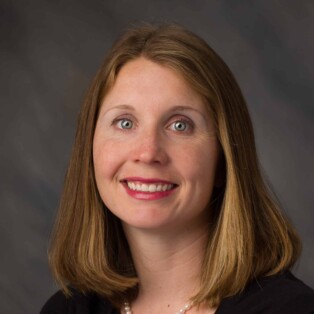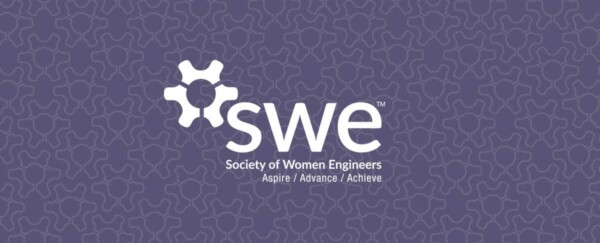“Don’t Hate the Game” was written by Mary Foss.
How many times have you heard or even used the expression, “Don’t hate the player, hate the game?” This mentality colors our professional experiences as well as personal ones. I have a suspicion that there really isn’t a game at all. If there were, it would imply some consistency and objective measures on how to play. These rules, just like a game of chess would be unbiased. In this expression, the idea of a game, allows for an idea of a player and the ability to detach personal accountability to your own actions, a kind of separation between the inconsistencies that are prevalent in human interactions.
So, if we must believe in the idea of a game, let’s define the rules so that they might be transparent and understood.
RULE #1: Find the facts. Within the world of engineering, it’s easy to imagine that decisions and interactions are based solely on logic, fact, reason, and my favorite, truth. There is one large hole in the engineering design process that takes the form of unconscious biases. We all have them. None of them belong and for the most part we are not aware that they are there. This makes every single engineer walking around a potential liability. This applies to me and you and everyone in between. Part of this awareness allows us to evaluate where these biases might be within our judgement and examine them and ultimately discard them. If we don’t do this we will never have access to the truth. This is one of the hardest rules of the game. We will be unable to find the facts if our vision is clouded by faulty beliefs about our colleagues.
RULE #2: Allow yourself to make mistakes and acknowledge them. You will make mistakes, this is a huge thing to accept about yourself. Allowing yourself room to be imperfect as an engineer is like breaking through a huge barrier. Early on in your career this may feel devastating, but if you accept this, it’s liberating. Mistakes are one of the best ways to learn and the ability to learn is ultimately one of the distinguishing variables that can define your career. Your ability to continuously improve is hinged upon the simultaneous debilitating fear of making mistakes (and so doing nothing) and your inability to be accountable for the ones you have made. This rule applies to you no matter where you are in your career and applies not only to technical content but also to relationships and professionalism. Not recognizing this rule is one of the biggest hurdles in ever following Rule Number 1.
RULE #3: Allow others to make mistakes gracefully when possible. If there were a referee, Rule Number 1 and 2 would be violated a lot. In general people don’t like the feeling of being wrong and will go to great lengths to alter the truth to avoid that feeling. Additionally, since unconscious biases are, by definition unconscious, they exist to reframe every interaction and decision without real awareness. Others will make mistakes and maybe they don’t know about Rules Number 1 or 2. Sometimes those mistakes will feel personal and offensive. Sometimes they will be insignificant. Other times they might even be illegal. Depending on the situation, begin by recognizing the fact that though it might feel personal, the mistake is theirs and not yours. Once you can do that, try and imagine that for some people they have lived their entire life without awareness of Rules 1 or 2. When possible, allow them to come to the realization of their mistake without judgement as well as the possibility of never arriving with realization at all. If you are forced to hold someone accountable for their mistake do so directly and with this rule in mind.
RULE #4: Don’t play dirty. It’s easy to find yourself on the playing field of a game you don’t understand. This game might involve gossip, threats, manipulation, coercion, superiority, etc. Actions of aggression either overt or passive are not part of the game. This game can be infectious and study after study have shown it only serves to create a toxic environment within the work place. There is a place for strategy and a place for venting as well as a place for private discussions on sensitive matters. These tactics should only be employed for the purposes of Rules 1-3. If they become common practice and are instead resulting from frustration due to violations of Rules 1 and 3 then the very fabric that holds together the structure of the work place will begin to erode. Choosing to not play dirty means always choosing honesty and integrity and never using either to manipulate. If you are clear in what you say behind closed doors then your language will remain respectful and allow room for the best possible solution. Plus, there is the bonus of not having to experience the heavy feeling of violating Rules 1 – 3 when you choose to participate in playing dirty.
RULE #5: Be nice. Recognize that your definition of ‘nice’ might be hindered by a violation of Rule Number 1. Nice does not mean people pleasing. It does not mean only saying what you think others want to hear. It does not mean failing to be firm and direct when needed. Nice does not mean being incapable of holding rule breakers accountable. Define the word with adjectives. To be nice is to be fair, respectful and to recognize that everyone, even the most callous of rule breakers is entitled to respect and dignity.
RULE #6: Publish the rule book. Talk about the rule book. Bring things out into the open and follow it as best you can. Begin every challenging conversation with a review of the rules. Allow everyone to add to the rule book and make it theirs. Eventually you might look around and find that everyone loves the game and the players that play it.
About the author:

Mary Foss is an Assistant Professor of Engineering Technology at Weber State University. She received a BSE in Bioengineering from Arizona State University and MSE from Stevens Institute of Technology in Pharmaceutical Manufacturing Engineering. She has held positions as Design Engineer for a large Aerospace company, Facilities Engineering manager responsible for large plant expansions projects and Technical Services Engineering Manager where she managed the Validation program and Metrology lab for a Utah based pharmaceutical company.
Related content:
- Women Engineers: Be Your Own Feminine
- Returning to Work After a Career Break
- How to Be a Better Ally to Your Female Coworkers
- Advocating for Yourself: Advice From a Female Engineer
- Five Fearless Women Engineers on Fighting Impostor Syndrome
- How NSA Supports and Encourages Women Innovators







I am not an engineer; however, I can relate to the basic rules which can easily work in many other jobs.